So Katie Couric issued what was basically an apology and then aired a follow-up show which featured the one-sided standard government position, with an interview of Dr. Anne Schuchat, Assistant Surgeon General and Director of the CDC's National Center for Immunization and Respiratory Diseases.
Dressed in military attire, the whole interview was basically an appeal to authority: Trust us, we are the authorities, and we know what's best.
Norma Erickson is the director of SaneVax, the leading website on the Internet highlighting the dangers of the HPV vaccine. She was present with Katie Couric at the first show airing both sides, but no one representing the victims of the vaccine were present for the airing of the second show. She offers her rebuttal below, giving facts and hard science in reply to the spin piece by the government doctor, who is obviously trying to do "damage control," which was aired on the most recent Couric show.
As Norma shares the data and science below, in response to the government doctor's comment "we aren't finding any concerning problems" regarding Gardasil, also keep in mind the following facts:
- The U.S. government holds patents on Gardasil and also earns royalties from the sale of the vaccine.
- People injured or killed by the Gardasil vaccine cannot sue Merck, as all vaccine manufacturers have legal immunity from lawsuits in the U.S.
- More than 10 young women have recently sued Sanofi, the distributor of Gardasil in France, for damages due to the vaccine, including lupus, Guillain-Barré, ADEM, idiopathic hypersomnia, and multiple sclerosis.
- Japan halted recommendations for the HPV vaccine and has begun a full scale probe over its safety, due to the large amount of serious adverse reactions reported.
How closely does the CDC monitor HPV vaccine safety?
by Norma Erickson
SaneVax, Inc.
December 4, 2013, the Katie Couric Show aired several segments focusing on The HPV Vaccine Controversy. Her guests included Emily Tarsell, Rosemary and Lauren Mathis, Dr. Diane Harper and Dr. Mallika Marshall.
In response to the ensuing firestorm of criticism the show generated, Katie Couric invited Dr. Anne Schuchat, Assistant Surgeon General and Director of the CDC's National Center for Immunization and Respiratory Diseases, to do a segment for Friday's show in order to "make sure people understand the facts about this vaccine and human papillomavirus (HPV)."
Dr. Schuchat's answers to Katie Couric's questions can be viewed in the video above, or on HPV Vaccine Conversation Continued. During the interview Dr. Schuchat was asked about the safety of HPV vaccines, she stated:
As the leader of the CDC Immunization Program, I am really committed to a very strong safety monitoring system. What I can say is more than 57 million doses have been used and with all the tests and systems that we track, we aren't finding any concerning problems.
Really, Dr. Schuchat - No concerning problems?
According to the CDC, VAERS data are monitored to:
- Detect new, unusual, or rare vaccine adverse events
- Monitor increases in known adverse events
- Identify potential patient risk factors for particular types of adverse events
- Identify vaccine lots with increased numbers or types of reported adverse events
- Assess the safety of newly licensed vaccines
This article will look at a few items which would raise red flags for the average medical consumer. Perhaps Dr. Schuchat can explain why they are not 'concerning problems' for the leader of the CDC Immunization Program.
According to the Rare Diseases Act of 2002, any disease or condition that affects less than 200,000 people in the United States is classified as a rare disease. There are currently more than 6,000 known rare diseases. One could safely assume that if one or more of these rare diseases began to show up in the VAERS database with any regularity it would certainly constitute a safety signal - a signal demanding further investigation.
Let's take a look at a few examples of VAERS data that should at the very least raise a few eyebrows.
HPV Vaccines and ADEM
According to the NIH, National Institute of Health, acute disseminated encephalomyelitis (ADEM) is characterized by a brief but widespread attack of inflammation in the brain and spinal cord that damages myelin - the protective covering of nerve fibers. ADEM often follows viral or bacterial infections, or less often, vaccination for measles, mumps, or rubella.
In other words, ADEM is a known side effect of some vaccines. It is listed as a rare disease in both the United States and Europe. Examine the following chart showing the VAERS reports of ADEM after all vaccines used in the United States each year from May 1997 through May 2013.
One would think an 8,100% average per anum increase in reports of this rare condition after the introduction of HPV vaccines would be a huge red flag. Apparently, that is not the case for Dr. Schuchat despite the fact that ADEM is a known adverse effect of some vaccines.
HPV Vaccines and POTS
Postural orthostatic tachycardia syndrome (POTS)is one of a group of rare disorders that have orthostatic intolerance (OI) as their primary symptom (when an excessively reduced volume of blood returns to the heart after an individual stands up from a lying down position). In POTS, orthostatic intolerance causes lightheadedness or fainting, and there is also a rapid increase in heartbeat.
The following chart shows VAERS reports of POTS and related symptoms after HPV vaccines compared to the number of reports filed after all other FDA approved vaccines.
There are over 80 vaccines FDA approved for use in the United States. If all vaccines were equally safe, HPV vaccines should account for around 3% of the total reports filed with VAERS. As you can clearly see, depending upon the symptom, HPV vaccines account for a disproportionate percentage of the reports filed pertaining to POTS and related symptoms. What is wrong with this picture?
Still - no 'concerning problems' Dr. Schuchat? Not with an average increase of 137% in reports filed per year?
HPV Vaccines and ITP
Idiopathic thrombocytopenic purpura (ITP) occurs when immune system cells produce antibodies that destroy platelets, which are necessary for normal blood clotting. The antibodies attach to the platelets. The spleen destroys the platelets that carry the antibodies.
The chart below illustrates the average number of reports of purpura on an annual basis for all vaccines listed in the VAERS database. There has been a 68% increase in the average number of purpura cases reported annually since the introduction of HPV vaccines in 2006.
Seriously, Dr. Schuchat, wouldn't this fall under the heading of potential unusual vaccine adverse events which the VAERS system is designed to alert the members of your staff to investigate?
HPV Vaccines and Infertility
Infertility in the United States is no small problem. The CDC estimates that 10.9% of women ages 15 to 44 experience fertility problems. This estimate was made from data collected from 2006-2010. Since this is not a rare disorder, one would think that any signal which indicated a tendency to exacerbate the problem would be of particular concern.
OK, the chart above shows a substantial increase of the reports of fertility problems, a 790% increase in the annual average to be exact beginning in 2007. What could have caused such an increase? Does it have anything to do with the introduction of HPV vaccines in mid-2006?
Let's compare the percentage of infertility reports after HPV vaccines to infertility problems reported after all other vaccines in the VAERS database from May 2007 to November 2013.
Dr. Schuchat, how can 2 vaccines, Gardasil and Cervarix, account for such a large percentage of infertility reports to VAERS for such an extended period of time without being a concern?
One Final Chart
Once again, Dr. Schuchat, how can two vaccines account for such a large percentage of the VAERS database? Why is this not a matter of concern?
Perhaps the mission statement for the National Center for Immunization and Respiratory Illness says it all:
The mission of the National Center for Immunization and Respiratory Diseases (NCIRD) is the prevention of disease, disability, and death through immunization and by control of respiratory and related diseases.The amount of disease, disability, and death potentially caused by Gardasil and Cervarix are obviously not a 'concerning problem' for those who are supposed to be monitoring HPV vaccine safety at the CDC.
Thank you, Dr. Schuchat, for making that perfectly clear to medical consumers in the United States and around the world.
For more revealing graphs, click here.
Read the full article here: http://sanevax.org/closely-cdc-monitor-hpv-vaccine-safety/
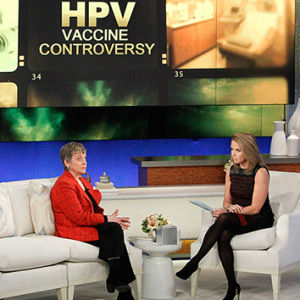
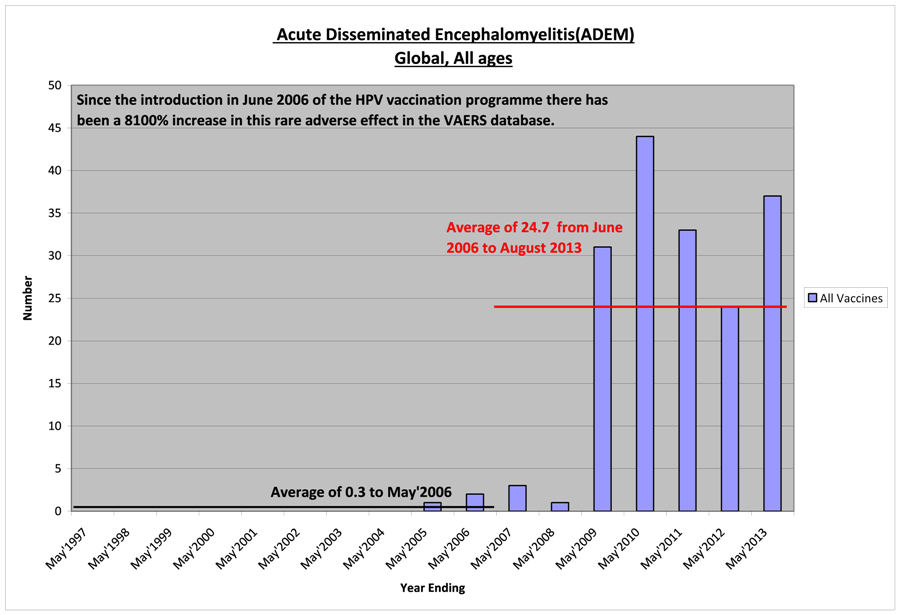
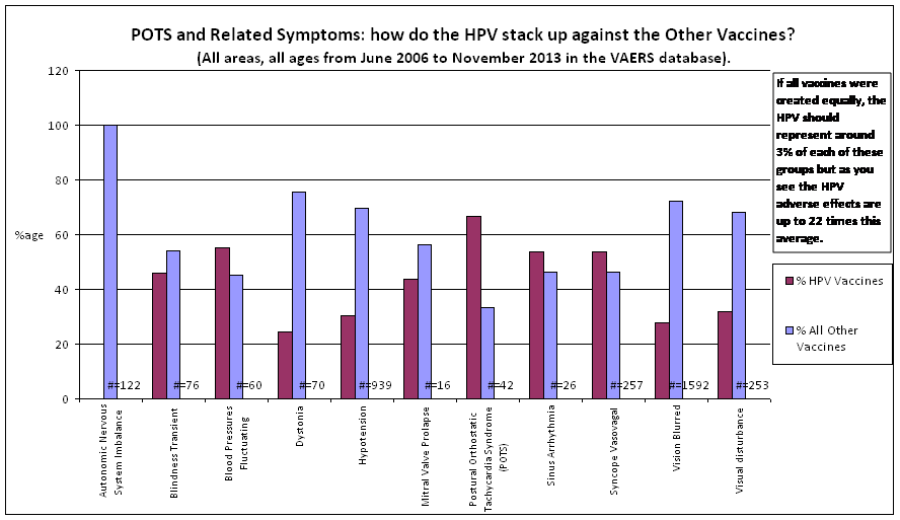
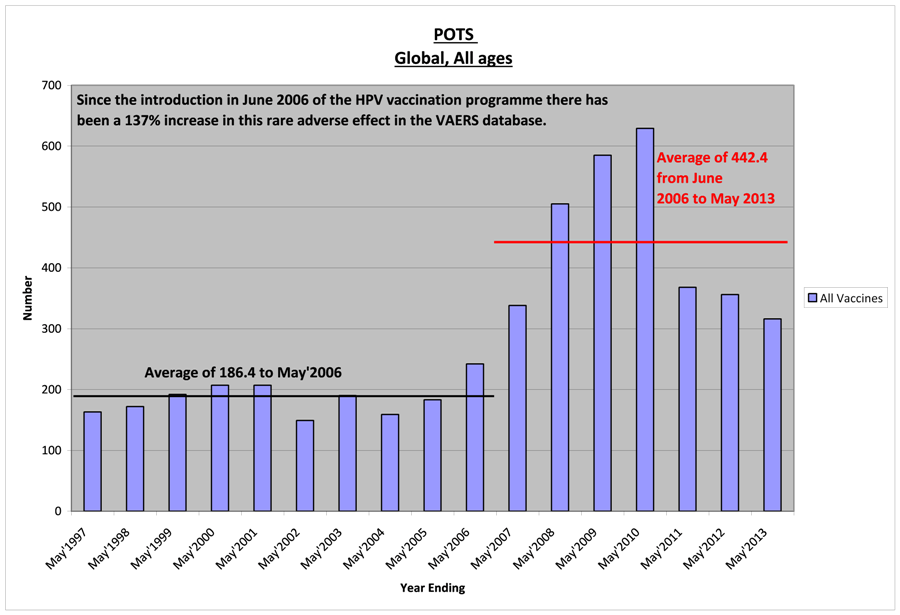
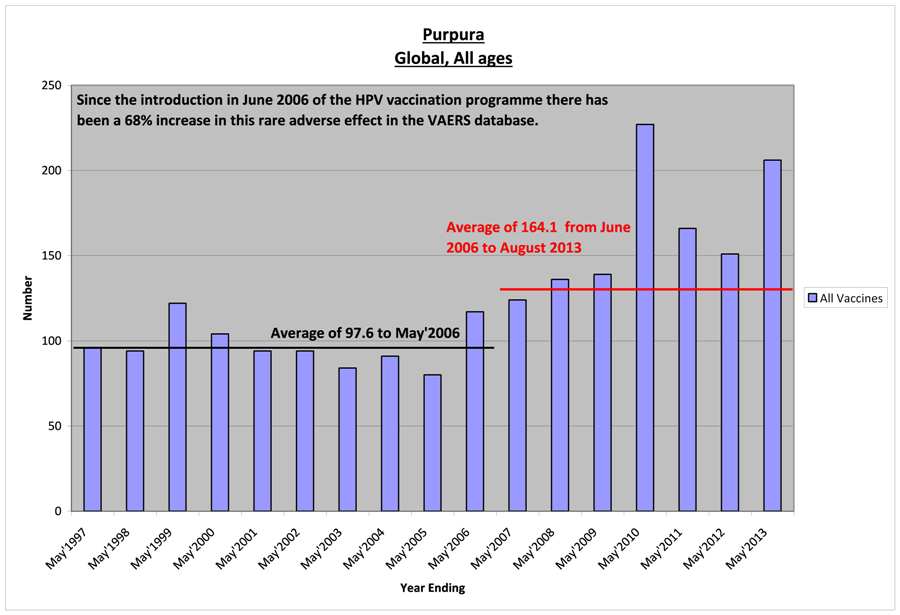
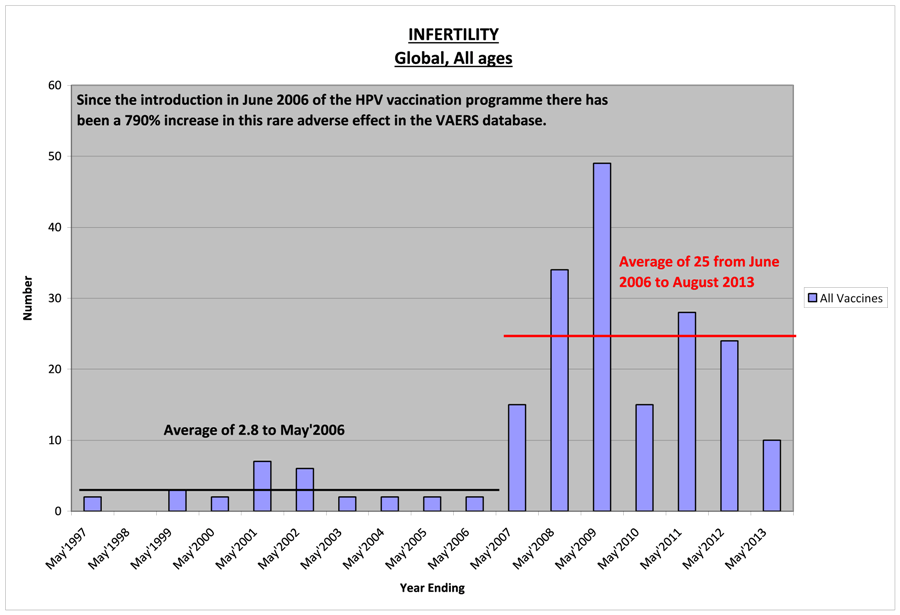
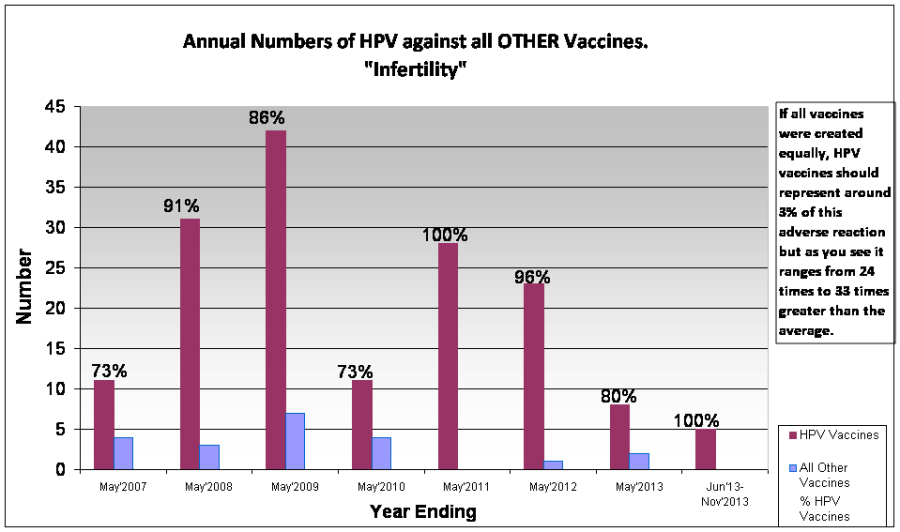
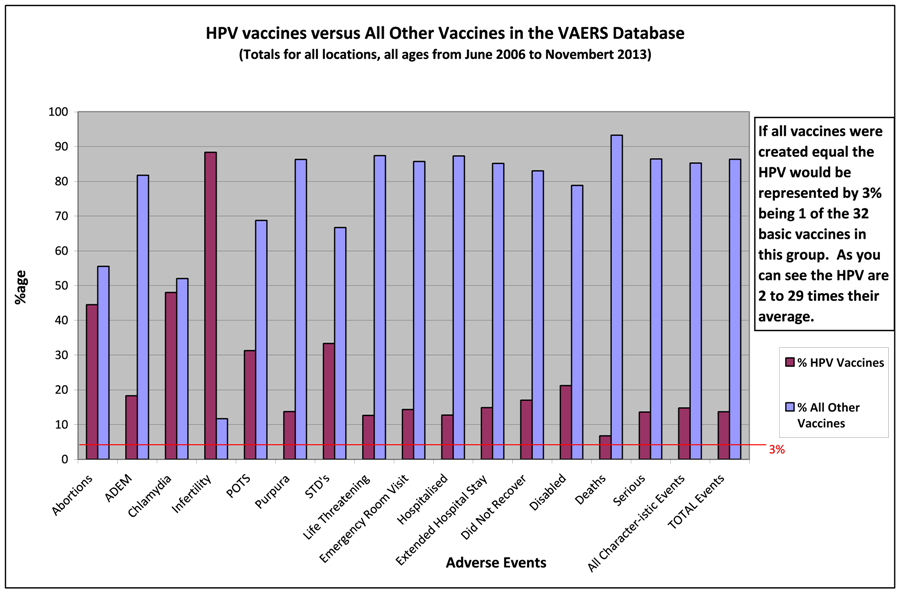



My daughter was given.....forced....this vaccine at school WITHOUT written or verbal consent from me.......HER MOTHER and legal guardian. How can one not feel so utterly helpless in this world when we are being more and more being stripped of our God-given rights. I remember, back in the 'good ole days', we needed a signed permission slip from a parent for ANYTHING at school that was outside of the educational curriculum. First off, I find it SO outrageous and disgusting that an anti-std vaccine was even targeted for young girls at all......my daughter was 11 when she got it. Why should I 'have' to be explain to my young daughter what an STD is????? Just another way our children are being stripped of their innocence WAY too early. Our governments tell us what to do......and we must heed because they can make things very difficult for us if they want to. We seriously need to start banding together and stand-up for our rights and beliefs......become a 'whole' too big to take down. If they can form a 'one government'......then we NEED to start forming a 'ONE SOCIETY'.